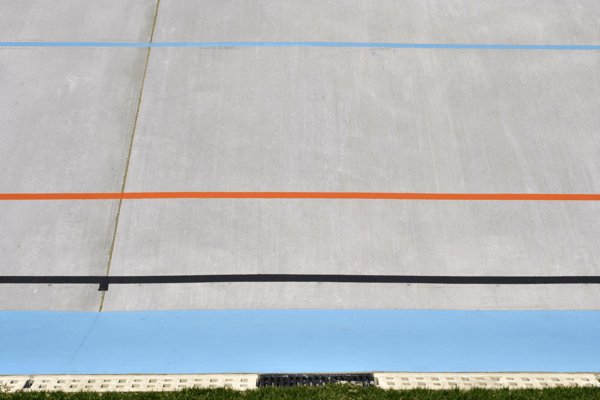Workplace injuries happen every day. The most recent available data in the US shows an estimated 2.5 million workers in the US experienced either severe or non-serious work-related injuries, with 27% of those resulting from trips, slips, and falls.
If you’re working on a job that needs you to level an area covered with concrete slabs. Or you’re concerned about avoiding uneven or sunken concrete in your own business, keep reading.
Today we're talking about how to level concrete slabs. Keep reading to find out all about how to level concrete slabs and the tools you’re going to need to do a great job!

Why Level Concrete Slabs?
Other than to avoid accidents in the workplace, there are several other reasons you may be asked to level concrete slabs.
For example, you probably already know that the condition of concrete worsens over time, especially if it hasn’t been properly looked after.
Generally speaking, the longer concrete is left unmaintained, including concrete slabs, the faster it becomes so damaged it’s not worth repairing.
One answer to this potential problem is to ensure that your concrete slabs are level. The likelihood of them coming loose and causing accidents as a result of trip hazards is therefore reduced.
If you’re in any doubt, the Americans with Disabilities Act of 1990 states that trip hazards are vertical heights of ¼ inch or more.
Other than in the workplace, you might find concrete slabs in a domestic outdoor setting, like a patio. Your client’s patio, built with concrete slabs, is now sinking.
Typically this happens when the ground underneath the concrete slabs settles as time passes. If the patio is left alone in this kind of situation, it won’t just be a safety hazard.
Still, it’s possible that draining water will be diverted towards your client’s house instead of away from it.
Whether you’re leveling slabs because of safety issues, for maintenance reasons, or both, the same arguments apply for other types of concrete surfaces.
For instance, concrete floors so that you have beautiful and level and concrete surfaces in buildings you’re working on as a contractor. In this instance, you’re likely to need flooring restoration machines to help you acquire the level surface you need.
What Are My Options?
If you know you can’t rip up the slabs and start over, there are a few ways in which you can level concrete slabs, depending on the job. Let’s check each one out:

Mudjacking
Also known as slab jacking, mudjacking is one for professionals. Even if you’re a newbie contractor, with the right tools, you can simplify this job and get it done professionally without too much of a headache.
Mudjacking is when you raise each concrete slab and force a mix of wet cement underneath the concrete slab to raise it back up to its original level.
Here’s How It’s Done:
Drill a few small holes in the concrete slabs that need to be leveled. Pump a high slump cement through your drilled holes.
The cement will fill the area under the slabs so that they lift back up into place. After all the slabs are level, finish off the holes by filling them.
Once the concrete slabs are all level, you are in a position to improve their look even more with a good old-fashioned clean and degrease. This will also help to remove any dust particles or loose earth and sand from the leveling process.
Mudjacking can also be used as a way of making some repairs to concrete sidewalks. Cracked, bucked, and uneven sidewalk areas can also be a hazard. This can also be a challenging job if you aren’t fully prepared.

Concrete Leveling Compounds
You can level out the floor area where you have concrete slabs with concrete leveling compounds. These are placed on top of the existing concrete slabs and make it easier for you to make repairs to slabs that might cause problems.

Here’s How It’s Done:
Thoroughly sweep the area, so there’s no dust or dirt around the slabs. Try using a pressure washer or a simple garden hose. Allow half an hour for the concrete to dry.
Add around ½ gallon of latex primer to a clean paint tray. Use a clean or new brush roller and roll it in the latex primer, like you would if you were painting. Add the primer to the concrete slab and allow it to dry for about 12 hours.
You’ll find there are still spots where the slabs are uneven or slightly lower than others. If that’s the case, you can lift the slabs via mud jacking if they are raised more than ¼ inch. If it is less than this, skim over the areas that aren’t flat.
Pour your leveling compound into a bucket and add water as per the manufacturer’s instructions. Mix together thoroughly until the mix is smooth and lump-free.
Where the slabs are lower than others, apply a coat of the compound and smooth it with a trowel. You have to work fast here because this stuff dries in less than an hour once it’s mixed with concrete! Allow it to dry for 24 hours.
That’s it! You’re all set to walk on your newly leveled concrete slabs.
You may find that some of the slabs are past leveling or repair, in which case you may want to check out more information on concrete slab costing and how to prep them for installation.

Get Started
Now you have all the facts, are you reading to level concrete slabs? If that’s the case, it’s time to put your learning into reality and get going. Request a demo of our products.
Our experts are delighted to show you how our concrete-level tools can work for you and make your life that bit easier. We’re also happy to answer any other questions you might have about how to level concrete slabs. Feel free to reach out!

2 comments